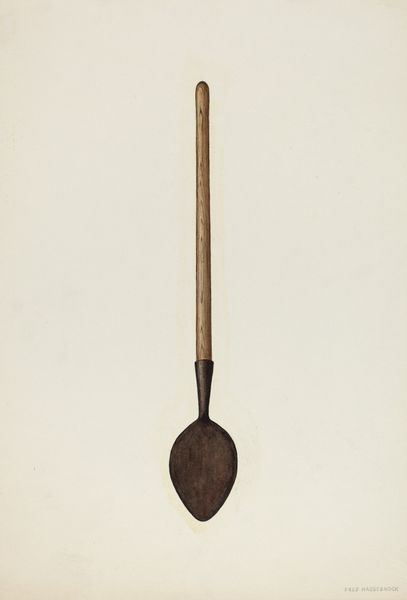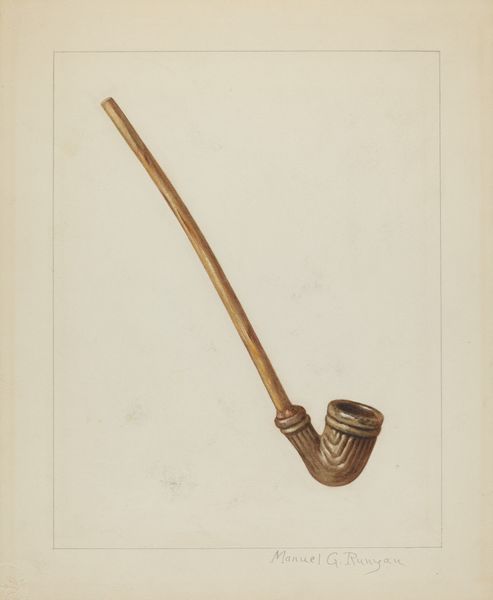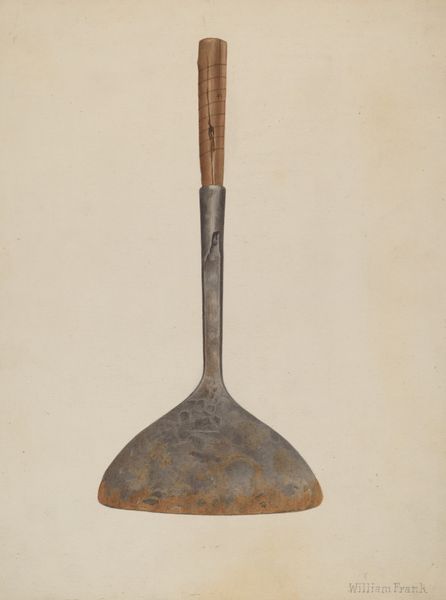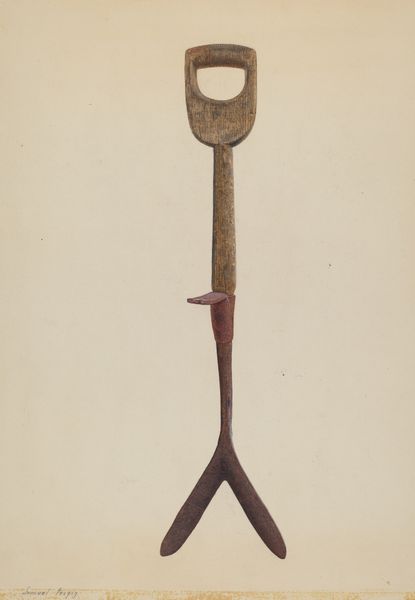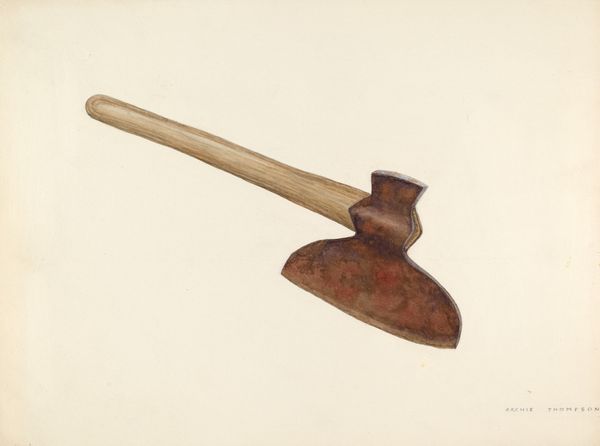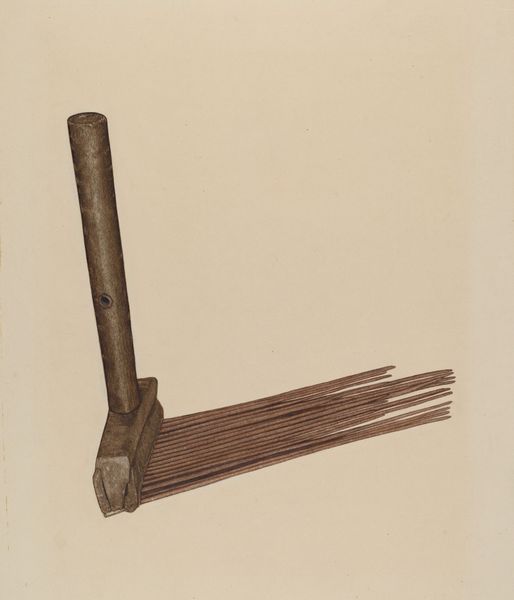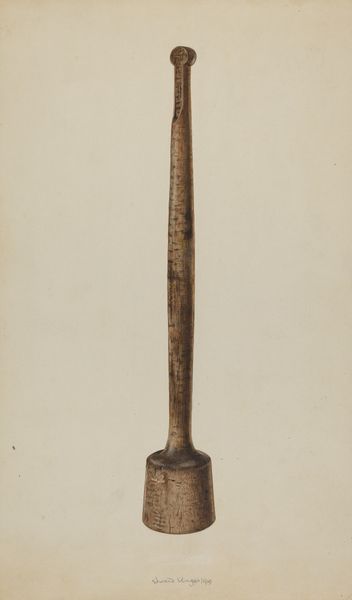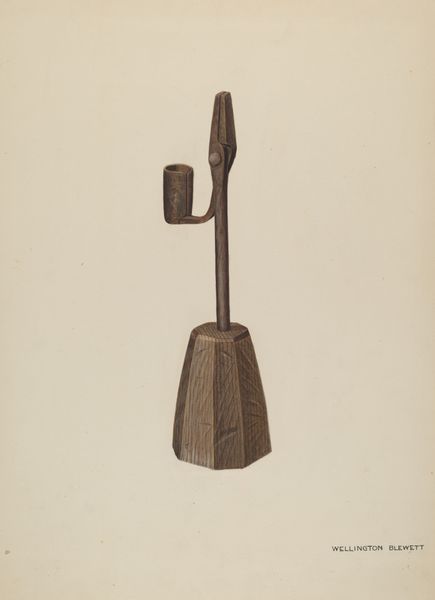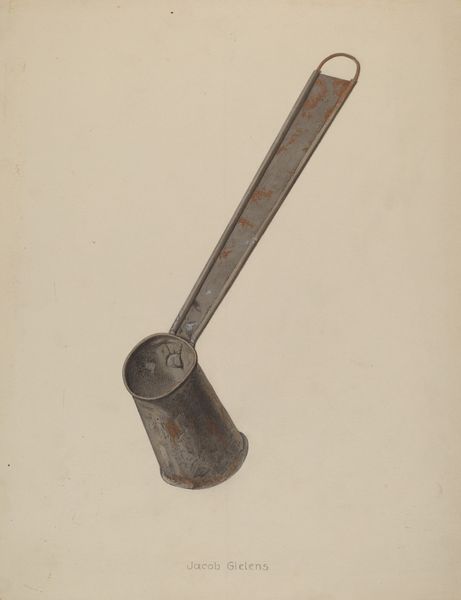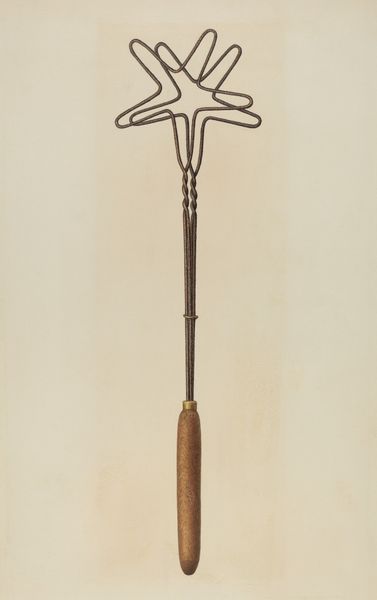
drawing
#
drawing
#
charcoal drawing
#
ceramic
#
watercolour illustration
#
watercolor
#
realism
Dimensions: overall: 35.5 x 26.6 cm (14 x 10 1/2 in.) Original IAD Object: 12" long
Copyright: National Gallery of Art: CC0 1.0
Editor: This watercolor and charcoal drawing from around 1940 depicts a turpentine scraper. It's surprisingly elegant for a utilitarian object. What stands out to you about it? Curator: It's compelling to see this humble tool elevated. It forces us to consider the labor and the means of production. Notice how the artist meticulously renders the wood grain of the handle, juxtaposed with the aged, perhaps rusted, metal blade. Editor: I see that contrast now. Is the medium itself significant? Curator: Absolutely. Watercolor, traditionally associated with landscapes and portraiture, is here used to depict a tool – an object of labor. And the addition of charcoal emphasizes texture, weight, the very physicality of the scraper. Think about the social context too; it raises questions about class, about the representation of working-class life in art. Who benefits from turpentine? Who extracts it? Editor: So it's not just *what* is depicted, but *how* it’s depicted, and with what materials. It challenges our traditional art-historical notions, right? Curator: Precisely. We're accustomed to seeing certain subjects and certain materials valorized in the art world. This drawing asks us to re-evaluate those hierarchies. It reminds us that art isn't separate from labor or materiality or consumption. Editor: That makes me think about all the unseen work behind everyday products, beyond art too! Thanks for making me reconsider what "art" even means. Curator: My pleasure. Seeing the tool in its social and material context opens up so much more to contemplate.
Comments
No comments
Be the first to comment and join the conversation on the ultimate creative platform.
